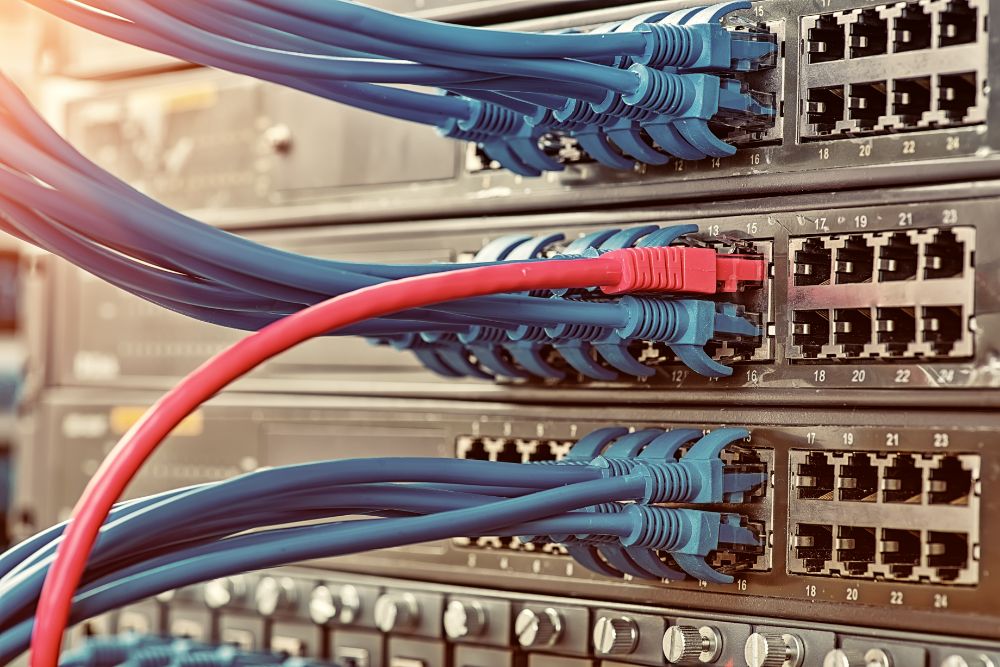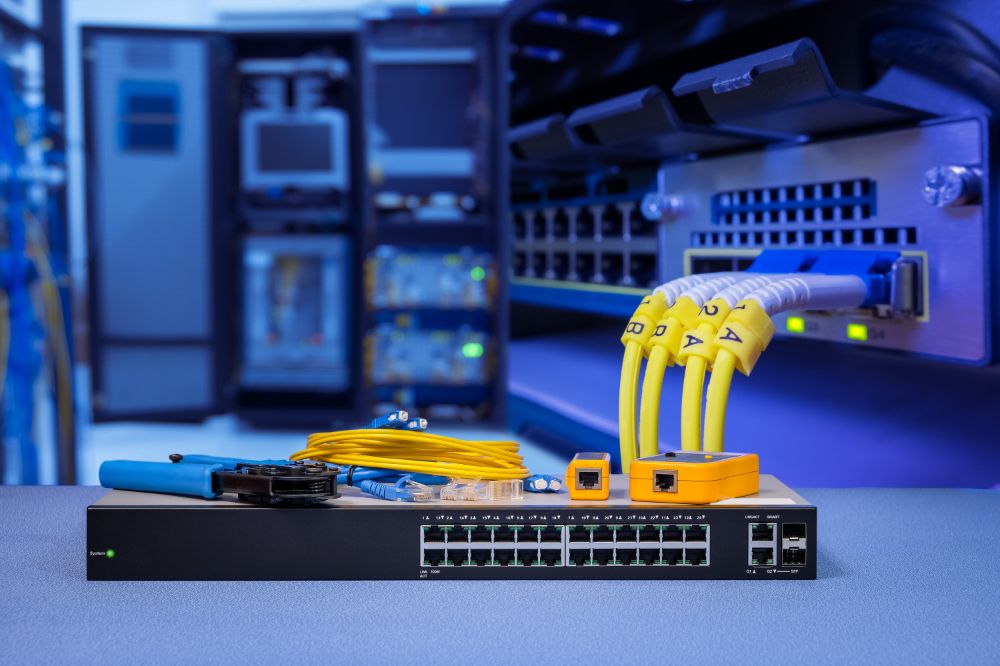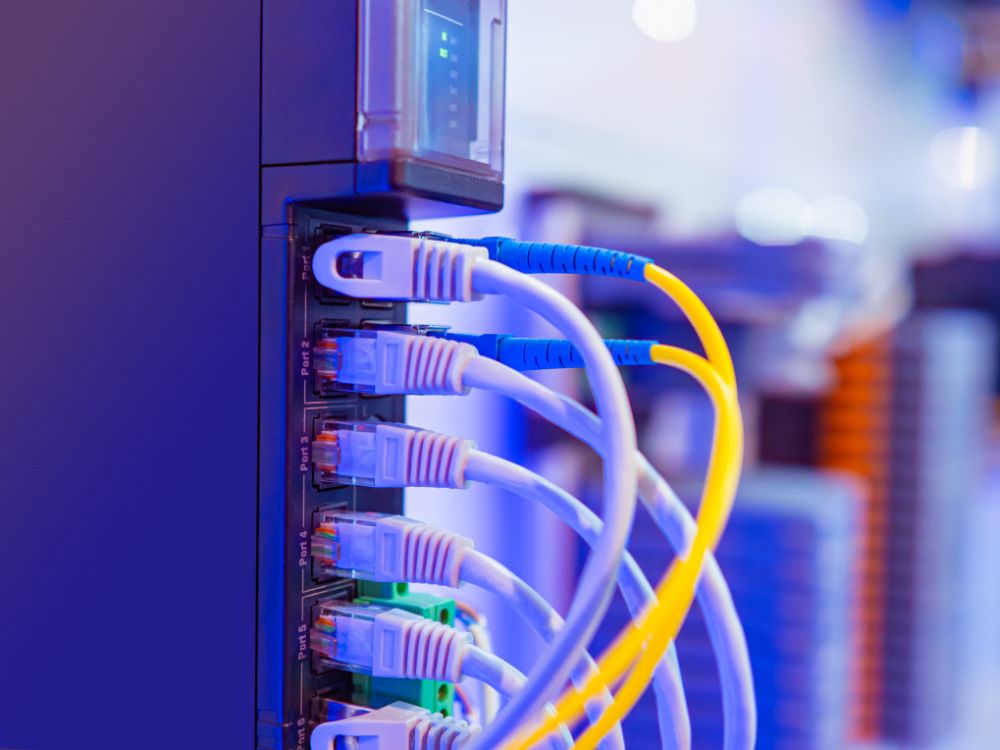Your network isn’t just important to you – it’s the lifeline of your business. That’s…

Comparing Cisco Layer 2 Switch Models: The Ultimate Guide
Effective network switches are essential to ensure your network operates smoothly. For starters, network switches impact your LAN’s performance, reliability, scalability, and even likelihood of experiencing a security dilemma. As you can see, investing in the best network switches is an absolute must.
Cisco switches are known for their reliability, as well as their security. If you’re in the market for network switches, you can’t overlook these. That being said, with so many switches on the market, network administrators have difficulty selecting the right model.
We’re here to help. We’ll answer any questions about Cisco layer 2 switch models.
Let’s start by defining what layer 2 switches are and then dive into factors you should consider when selecting one. Then, we’ll share more information about comparing them and even identify some of the best options.
What are layer 2 switches?
If your network uses ethernet-based communications, you’re probably familiar with the concept of a layer 2 switch. This switch is a traditional network switch port that works within the data link layer.
It’s responsible for forwarding data packages using specified MAC addresses. It can also do this at a remarkably high speed, making it an appealing option.
Traditionally speaking, layer 2 switches forward the frames based on those MAC addresses and doesn’t do traffic filtering.
However, it’s becoming increasingly common for layer 2 switches to have at least elementary traffic filtering abilities. You can use your layer 2 switch for MAC address filtering, which allows you to block or approve traffic based on the destination MAC address tables provided.
Another key feature is filtering, thanks to VLAN. Virtual LANs allow your switch to identify and separate network traffic into separate broadcast domains.
Performance and Reliability
Cisco creates attractive layer 2 switches because they excel in performance and reliability. When you’re considering which switch you should purchase, it’s essential to consider uptime, network throughput, and the quality of service you will get.
That means you should watch for certain features Cisco layer 2 switches have in place to boost reliability. These include redundancy, hot-swappable components, and failover mechanisms.
Cisco layer 2 switch models overview
Perhaps you’ve heard of Catalyst and Nexus switches and aren’t sure which would fit your organization better. A Nexus switch is an excellent idea for a large data center, as it is flexible and has many features that allow easy integration and use.
Catalyst switches are better for enterprise networks with many network devices. Cisco Catalyst switches also have a great reputation for high uptime. Therefore, when deciding which Cisco switch is right for you, ask yourself if the Nexus or Catalyst switch is a better match.
You can also consider the modular switch, which allows you to configure it using field-replaceable units. Lastly, consider fixed-configuration switches, which have a pre-decided number of ports and aren’t expandable. If you’re not scaling your network, this will work fine and save you money.
Catalyst Switches
Cisco Catalyst switches may be the right fit for your network’s needs. Here are some of the most popular Cisco Catalyst switches you should consider when deciding what’s right for your business.
Cisco Catalyst 2960 Series Switches
These switches are fixed-configuration, standalone switches created with medium-sized businesses in mind. They offer ethernet connectivity, advanced security, wireless networking, and even scalable management, making them an attractive option.
There are also redundancy and resilience features to protect your critical applications’ availability. This is an excellent investment because it is easy to manage.
Cisco Catalyst 3560 Series Switches
This is another fixed configuration, enterprise-class level switch that is excellent for businesses. This switch is a compelling choice because it prioritizes security, quality of service, and easy troubleshooting.
Nexus Switches
Nexus switches offer low latency and excellent performance. They support your business’s most critical applications, simplify operations, and allow you to scale your network seamlessly. There’s also a hot-swappable design to keep things up and running in case an outage occurs.
Fixed Configuration Switches
Different types of fixed-configuration switches exist, including unmanned, managed, and smart switches. They only have a set number of ports available, making them less expensive.
Modular Switches
Last but certainly not least is the modular switch. As your network grows, you can use a modular switch to expand it.
This gives you a big leg-up over fixed configuration switches if you expect a lot of scaling. You can add expansion modules for firewalls, network analysis, or wireless connections.
Factors to consider when choosing a Cisco layer 2 switch
So you’ve decided to buy a Cisco layer 2 switch but are unsure how to pick it out. Don’t worry; we are here to help you make that decision easier.
It comes down to three main factors you must consider when selecting a Cisco layer 2 switch. The first is performance requirements, then budget, and finally, scalability.
Performance Requirements
Aside from budget, your main deciding factor is how you need your switch to perform. When we talk about performance requirements, we talk about bandwidth, latency, packet forwarding capabilities, and uptime.
If uptime is your number one priority, the Catalyst switch may be the right option. Or, if you have a small network, you can get away with a fixed configuration switch.
Think about how you’re using the switch, and let that guide your decision. Otherwise, you may end up shelling out a ton of money on a switch you won’t use to its fullest potential.
Budget Considerations
Obviously, the more robust your switch is, the more expensive it will be. Therefore, you will have to consider the budget your organization has allocated to determine which switch will work for you.
If you fear that a Cisco Catalyst switch is out of the budget, consider checking out refurbished options before you write it off as impossible.
Also, if you’re looking for a switch requiring using ethernet or fiber optic cables, remember you’ll have to finance these, too.
Scalability
Your business is growing—and choosing a switch that can handle your network’s increasing needs makes your business a great service. Modular switches are an excellent option to ensure your switch can grow with your business. However, while modular switches are highly flexible, they come with a higher price tag.
If you’re not scaling your business, choose Cisco process switching methods that aren’t designed to scale, like fixed configuration switches. By future-proofing your switch when you purchase it, you can rest assured that you won’t have to buy a new one two years from now.
Comparing Cisco layer 2 switch models
Are you ready to compare a few types of Cisco layer 2 switch models? We’ve compiled a quick list of three you should consider when you look.
Model 1: Nexus 3000 Series
The Nexus 3000 series is an excellent switch option because it is low-latency and prioritizes performance. Thanks to its redundancy and hot-swappable design, it protects your network from outages. Plus, this switch allows you to customize your network easily.
Model 2: Catalyst 2960 Series
We mentioned this series once, and we have to mention it again because it is unparalleled in layer 2 switches. It is a fixed configuration, which you’ll want to consider if viewing this model. However, its enhanced security options make it a can’t-miss.
Model 3: Catalyst 3850 Series
This series is massive, as there are over 30 models you can pick from, so you are sure to find the perfect layer 2 switch for you. The highlights of these switches are that they support high-speed uplinks, feature a lot of ports (this does vary depending on which model you choose, so be careful), and have an awesome warranty.
Management and security features
You’re spending a lot of money on your switch—you’ll want to take good care of it by investing in security and management. You will be relieved to learn that for Cisco layer 2 switches, there are a lot of available management options, such as Cisco Prime and Cisco Network Assistant.
You’ll also want to keep an eye out for can’t-miss security features, such as access control lists, secure management interfaces, and port security. If you don’t prioritize security, you risk having a network-wide security situation, which isn’t advisable.
Pricing and total cost of ownership (TCO)
A few things impact the price of the Cisco layer 2 switch models you’re looking into. It’s understandable if, at first, there is some sticker shock.
Several factors impact the price of Cisco layer 2 switch models, including hardware specifications and software licenses. Obviously, these can be costly. However, consider a refurbished option if you want to stay within budget.
When buying your switch, don’t just consider the cost to buy the switch—that’s not a good indication of the total cost of ownership. Yes, there are the initial costs, which include the switch purchase and setup.
However, there are also costs associated with ongoing maintenance. With any luck, you’ll have your switch for years and have to maintain it.
Future-proofing your network
Last but certainly not least, it’s important you future-proof your network. That means thinking about the hardware forwarding tables, destination IP addresses, router processors, routing protocols, routing tables, and route processors. Selecting a switch model that’s relevant even as technology evolves and one that you can get technical support on for years to come is vital.
One major consideration in future-proofing your network is purchasing a switch that can scale. Whether you are looking for a switch you can build onto or one that can handle a significantly larger network than you currently have, look ahead to ensure your switch will be able to forward packets for years to come.
We don’t know what tomorrow’s data centers look like—but by doing your due diligence on your switch today, you can rest assured your enterprise networks are good to go. You should also make sure your product can receive software updates for security and that it’s compatible with emerging technology.
Choosing the right Cisco layer 2 switch model for your needs
When deciding which Cisco layer 2 switch is right for you, it’s most important to consider your business’s network needs. Yes, it can be tempting to purchase the switch you’ve worked with in the past, but that could lead you to buy a switch that can’t handle the scale of your network or won’t be able to grow with you. You can make an informed decision by keeping your network’s needs in mind.
How Network Craze Can Help
If you need help deciding which layer 2 switch is right for you, Network Craze can help answer any questions and provide expert advice. We also provide maintenance and a lifetime warranty, so you’ll have peace of mind that your equipment will last!
Contact us today to begin.





